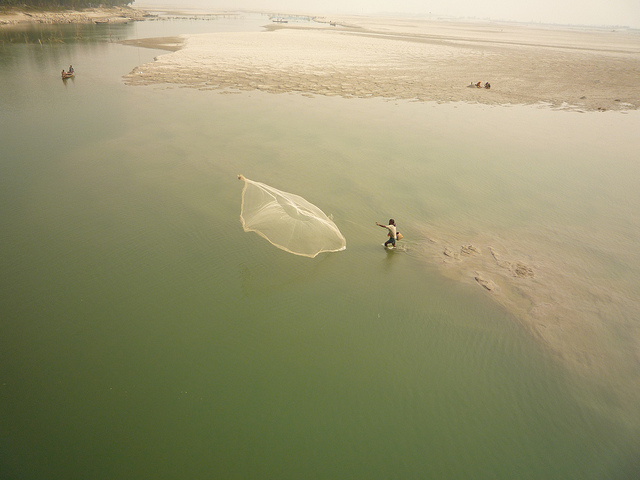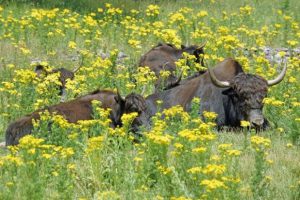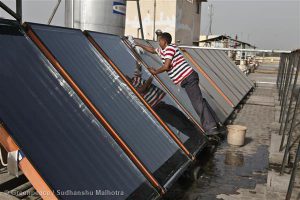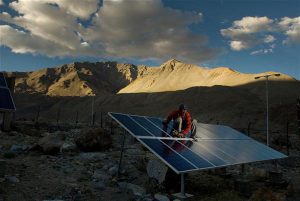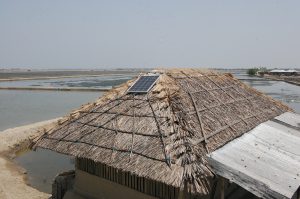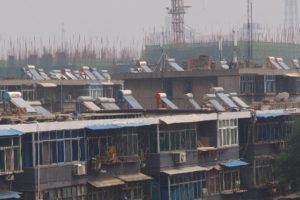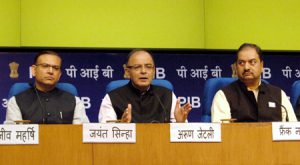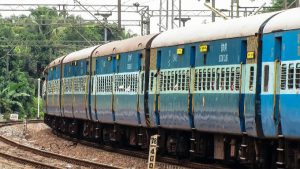“Do not worry about the Teesta treaty. It will be signed very soon,” West Bengal Chief Minister Mamata Banerjee said during a recent visit to Dhaka. The statement once again raised hopes in Bangladesh, the downstream country whose north-western section depends heavily on the waters of the Teesta for farming and fishing.
Flowing down from the Himalayas in Sikkim, the Teesta runs through the Indian state of West Bengal before reaching Bangladesh, irrigating about 14% of the country’s farms and eventually joining the Brahmaputra.
Teesta water sharing agreement
More than three years ago, then Indian Prime Minister Manmohan Singh was all set to sign a 50:50 Teesta water sharing agreement with Bangladesh when Banerjee vetoed the deal on the grounds that West Bengal needed more water from the river. By the Indian Constitution, the central government has the power to sign water sharing treaties with other countries, but Singh was not in a political position to go against the wishes of Banerjee.
The collapse of the deal in September 2011 led to serious dissatisfaction in Bangladesh, which shares 54 rivers with India. Marches were taken out when the water flow in the Teesta fell to almost nothing in the lean months over the last two years.
See: Teesta river runs dry as India and Bangladesh fail to resolve disputes
Now, when Banerjee met the Bangladesh Prime Minister Sheikh Hasina on February 21, she assured Hasina that her state government would play a positive role in solving the Teesta water sharing issue.
Over lunch at Hasina’s home, Banerjee jokingly complained about not getting enough hilsa fish in Kolkata. The Bangladesh premier replied: the more water flows into Bangladesh, the more hilsa there will be. Banerjee said she wanted hilsa from the Padma, not from the Teesta.
The hilsa, a species of shad, is a favourite fish on both sides of the India-Bangladesh border. The estuary fish which swims upstream to lay eggs has been in short supply in recent years, leading to high prices, much angst and at least one joint research project.
Banerjee said the Teesta issue should be resolved in a way that benefits both sides and safeguards the welfare of the populations dependent on the river. Bangladesh and West Bengal were part of Bengal till 1947, when India was partitioned into India and Pakistan. What was East Pakistan at that time became Bangladesh in 1971 after a bloody freedom struggle against Islamabad.
The importance of Banerjee
Since the 2011 scrapping of the Teesta treaty, India’s President, former Prime Minister, former and current foreign ministers and former water resource minister have all assured Bangladesh that it will be signed after all. But it has been hanging fire due to opposition from Banerjee. That is why Bangladesh is placing so much significance on Banerjee’s assurances during her Dhaka trip.
After getting the deal scrapped, Banerjee had set up a one-member commission to look at it. Then she asked India’s Central Water Commission for water flow data of the Teesta. Officials who have spoken to the commission have told thethirdpole.net in the past that water flow in the Teesta is already very low when it enters West Bengal from Sikkim, due to the construction of a series of hydroelectric projects in the upstream state. There are a few such projects in the West Bengal stretch of the river as well, before the river flows down from the Himalayas to the plains.
Many people in Bangladesh are hoping that despite such problems, the treaty will now be signed. They have been enthused by the words of Banerjee quoted in a Dhaka newspaper, “We all love Bangladesh and try to give importance to its interest. It’s also our country… we will play a positive role in solving the Teesta water sharing issue soon by protecting the interests of both West Bengal and Bangladesh.”
There is even some hope that the treaty may be signed as early as March 26, when India’s Prime Minister Narendra Modi may visit Dhaka to take part in the Independence Day celebrations of Bangladesh. However, Modi’s visit has not been finalised yet.
River experts are not as sure as others that the treaty will be signed soon. They point out that Banerjee said there were “technical matters to resolve” before the Teesta treaty could be finalised, and she did not commit to a date by which this would happen.
“Experts of two countries resolved all the technical details while finalising the draft. Now if she raises any technical issues after all these years, it would be to delay the signing process of the treaty,” said Ainun Nishat, an eminent hydrologist who had been engaged with the Bangladesh India Joint Rivers Commission (JRC).
Another official who is in the JRC now said, “It is hard to determine what she meant by ‘technical matters’ because earlier she had opposed the Teesta deal without raising any specific issues that had to be resolved.”
Asked when the next JRC meeting would take place, a senior official in Bangladesh’s Ministry of the Water Affairs said he was waiting to hear from India.
Little water in the Teesta
On February 6, two weeks before Banerjee’s visit, Dhaka had written to New Delhi about a drastic fall of the Teesta flow and sought measures. The ministry official said Bangladesh was yet to get any positive reply to that. In the lean season that lasts before the start of the monsoon in June, irrigation engineers in India often close some of the gates at the Gazaldoba barrage, about 100 kilometres upstream of the spot where the Teesta enters Bangladesh.
While Banerjee was in Dhaka, there were only 300 cusecs (cubic feet per second) of water flowing down the Teesta from India. Over the first 20 days this February, the average has been between 300 and 400 cusecs, said an official of the Bangladesh Water Development Board. Official records show that between 1973 and 1985, the average flow during the first ten days of February used to be 5,986 cusecs. The barrage was built in 1985.
“Right now, the water level is below the knee level,” said Faridul Islam, convener of the Teesta Bachao Andolan, an NGO platform that is demanding equal share of the Teesta waters. “Though didi (Banerjee) is visiting, assuring us, but we have got such assurances before also. We need water, not assurance. If we get water, it will not be a problem if they don’t sign the treaty at all.”
